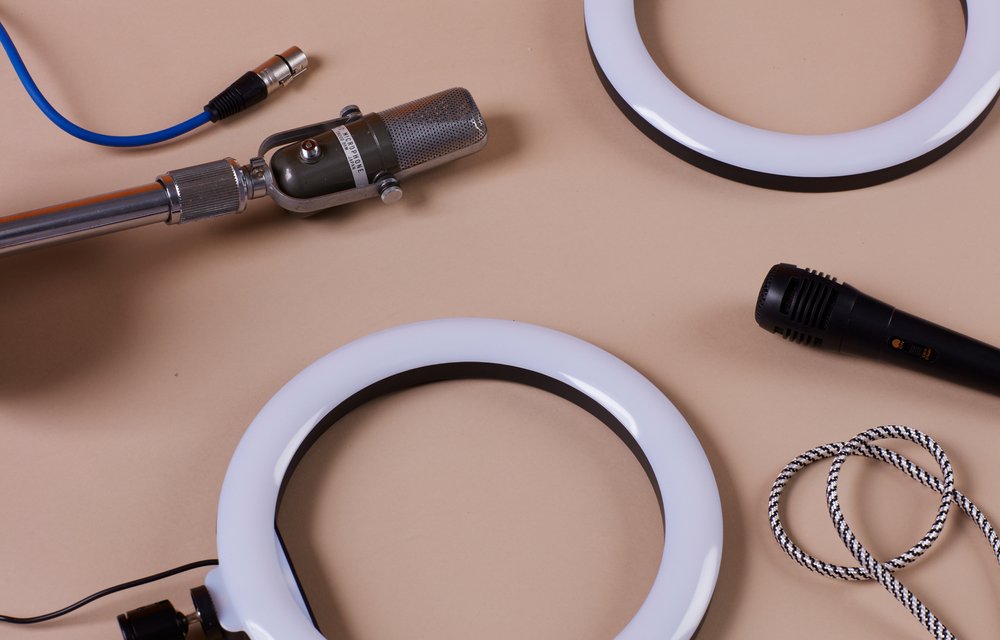Take your small business to the next level with our free video marketing workbook.
The email you entered is invalid.
Thank you for subscribing.
By entering your email, you indicate that you have read and understood our Privacy Policy and agree to receive marketing from Squarespace.
When you’re a small shop or a solopreneur, a little preparation goes a long way. Polished, professional-looking videos don’t just happen by accident, and planning a whole shoot can be stressful. Allow yourself the time to get everything set up and get all your questions answered in advance, so there’s minimal chaos when it comes time to hit “record.” If all this is new to you, start with the Small Business Guide to Video Marketing.
From setting up a budget to testing your tech, use this checklist to prepare for your first video shoot.
1. Set your budget
Setting a clear budget before you begin is the best way to embark on a new marketing project. Costs can quickly add up while you’re chasing down your great ideas. As a first step, decide on a hard budget for your video shoot. If you need to rent a studio, hire a narrator or animator, license a piece of music, pay for an editing app, or invest your own time in capturing and editing video footage, you should create line items for all your expenses and set a cap for each one. You might also want to build some cushion into your budget so that you won’t end up in the red even if things don’t go exactly according to plan.
2. Design your creative
Plan out your creative ideas before the camera is rolling. That will help ensure that you make the best use of your time in front of the camera, because you’ll already know what you’re aiming for. You can get as specific as you’d like in this stage, from creating an inspiration hub with mood boards that will guide your vision to selecting the color scheme, style, and emotional tone of the video you’re going to shoot. You can also use storyboards to set the visual direction for specific scenes and pair each one with a script.
Once you’ve nailed down the concept of your video, take the time to craft a script. Most people aren’t as comfortable in front of the camera as they think they’ll be, so working from a script is a good way to keep things running smoothly and help calm any on-set nerves on the day of your video shoot.
3. Scout your location
Deciding where you’re going to shoot your video is one of the most important decisions you’ll make during this process. Imagine how the location will read as a background for your video: Does it match the tone you’re going for and the message you’re delivering? Then take a step back and think about how you’ll frame your shot. You can even hold out your arms to look through your fingers like a makeshift viewfinder.
Are there any conflicting messages or competing brands in the shot? Is everything on-brand and in line with your creative vision? Is there anything in the shot that would be distracting to the viewer? Whether your setting is relatively secluded out in nature or a densely populated urban area, thinking through the specific challenges of your location in advance will set your video shoot up for success.
4. Find your lighting
Lighting is critical to making an effective, professional-looking video without a production studio. Use at least one primary light to focus on your main subject, and create a well-lit background. Even if you’re going for a dark, gritty feel, there needs to be enough contrast in your video so that whatever you’re filming reads clearly to the camera.
You’ll also want to think about how the lighting at your location changes throughout the day. That may be less of a concern if you’re filming indoors or if you plan to use lots of lighting fixtures, but if your location includes big windows or you’re going to film outside, you’ll need to consider the time of day and set up a Plan B in case the weather refuses to cooperate. Will you reschedule and try another day? If you plan to move the shoot inside, where is your backup location?
5. Check your sound
Depending on how you plan to put your final video together, you’ll also want to pay attention to the sound levels at your location. Lots of background noise may be distracting if you’re capturing audio along with your video footage, for example. If you’re using audio narration or a voice-over track, you’ll want to get a clean, crisp recording. When you’re scouting your location, close your eyes and listen to the ambient sounds in the space around you. That will help eliminate—or at least plan ahead for—any noisy surprises.
6. Test your tech
You’ve set your budget, designed your creative, selected your location, and made it to shoot day, only to discover that your equipment is out of battery life. Avoid that snafu by testing all your technology before you make it to the video shoot. Even if you have a very short equipment list—smartphone, microphone, computer—all the tech you plan to use should be well-charged and in good working order to help you bring your creative vision to life.




